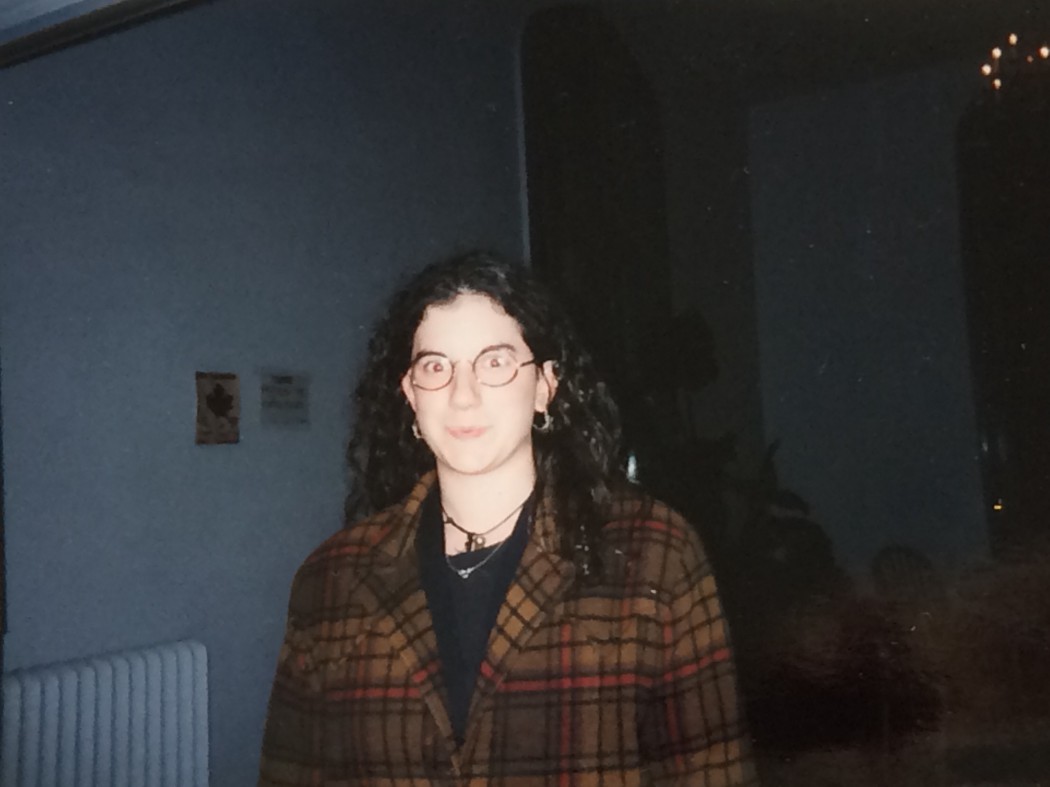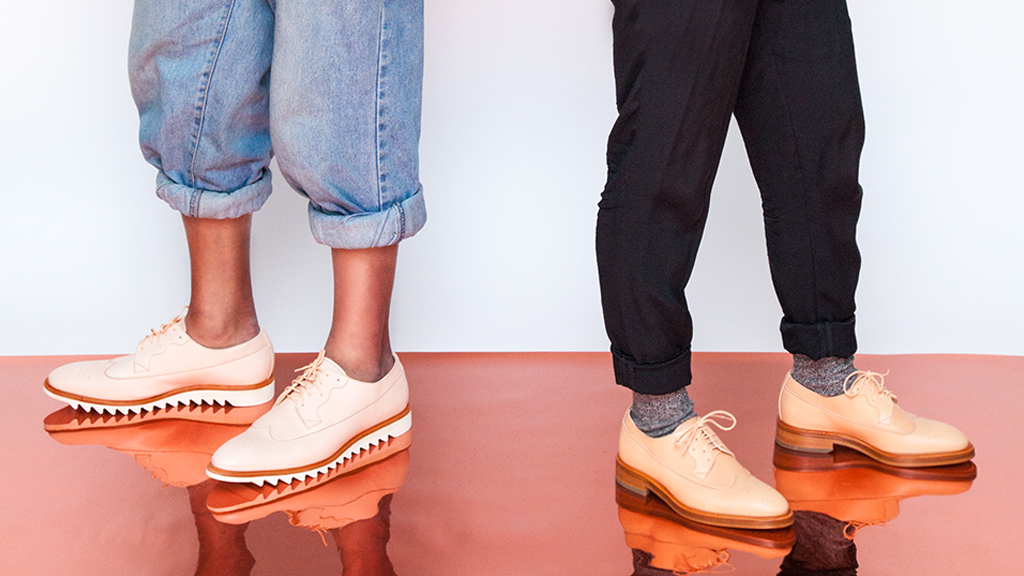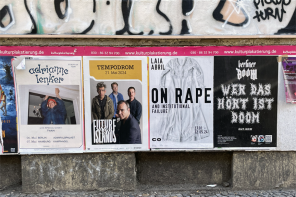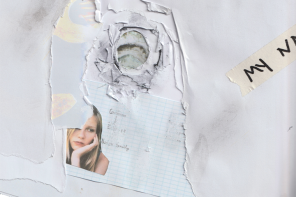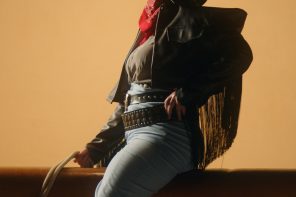There I sat, staring into my luggage—the fancy dress, the perfume, the strappy heels– and wondering why nothing in my relationship was adding up. I was just back from my boyfriend’s brother’s wedding with a sunburn and a lot of disappointment. Suddenly I had one of those moments, the kind where you recognize your self-worth has been threatened and the need to stand up for who you really are becomes very clear. As crappy as they feel, these moments can be crucial opportunities. I realized, after so many subtle and not-so-subtle prods from my boyfriend to “dress like a grown-up woman,” toss my candy-smelling perfume (NEVER!), maybe wear the flats instead of the sneakers, wear more colors, or fix my hair, that the pile of gifts he gave me before the trip to see his family were intended to make me more feminine. As in, before he had to be seen with me on a wedding weekend. The expensive lingerie, the clothes, the fancy perfume, the pretty little necklace—it was all window dressing for a role he wanted me to play in front of his family. Maybe our conflict really boiled down to him wishing I were someone I wasn’t.
I wanted to kick myself for not seeing it earlier, but right then, and even more when we finally broke up for good later that month, an important part of my identity solidified in response to being insulted and threatened for how I wore my gender. I was, and am still, a straight-identifying woman who loves menswear styles. I reserve the right to dress in feminine clothes, wear make-up, or rock a pair of heels whenever I feel like it, but I love having “masculine” clothes and shoes in my wardrobe. I love dressing like a tomboy and always have, and I don’t feel comfortable being trapped in a feminine routine when it comes to style. After that relationship ended, I resolved to be true to my completely normal impulse to have a personal style, and I realized how much my freedom to dress however I want was worth defending.
It was a feminist intervention for myself. I learned to listen to my own preferences and feel no shame whatsoever if my outfit included pink marabou and glitter, a pin-stripe suit, or whatever made me feel good that day. At 33, maybe I was a bit late to this realization, but taking crap for not being womanly enough made me realize how much I’d always battled some inhibition when exploring masculine styles. Anyone who bullies you into being more feminine, more masculine, or anything you’re not, is not worth your time, it should be obvious. But this problem in my life is bigger than this one insecure, sexist boyfriend. It’s also bigger than me.
As a kid in Southern US in the 1980s, I hated being forced to wear dresses and stockings—they itched and got caught on trees and dirt bikes. I came of age in the 1990s in Los Angeles, and those fashions were my best friends—clunky oxfords for girls, oversized sweaters and jackets, dresses with combat boots bought at the army surplus store. I think I wore the same wing-tip brogues most of the days I was in college, paired with suit pants and button-downs and v-neck sweaters, and had a wardrobe of flannel shirts. It was heaven. But these styles still required a layer of girlyness to be acceptable—some lipstick, a chocker necklace—and the pressure to be thin, feminine, and appealing to men in those adolescent years never went away, despite the flannels. The gender politics of that time in life are too complicated for this article—we all have our stories.
As the years have gone by (I just turned 40), I’ve found it harder and harder to satisfy my taste for menswear clothes and shoes that don’t a) look like feminized versions of men’s styles, b) require expensive customizing, c) lack good fit because they are simply made for men, d) fall waaaay out of my price-range, or e) belong in the teen section. There are, of course, more and more exceptions to this rule, especially since websites like Dapper Q have taken off, and a whole crop of designers catering mostly to the queer and genderqueer communities have launched clothing lines.
The growth of the queer community as a consumer category, and the increased visibility of trans and genderqueer communities in popular culture, have shed some really important light on the problems of gender-binary-ruled fashion. But we still have a long way to go. I know trans men who can’t afford to buy their shoes in their actual foot size, so they buy men’s shoe styles in larger sizes and stuff them with paper. And this problem also affects straight women like me, women who just don’t want to act out some gendered part in society every time we get dressed. I mean, in 2016 why can’t I find an affordable pair of saddle shoes that fit my feet and don’t make me look like a cheerleader??! I know I can’t be the only one. Why is this so hard? The need for gender equality through accessible fashion is a queer, straight, feminist, everyone issue.
This is urgent. We need to break the gender boundaries in fashion. We need clothes to be available to everyone without arbitrary restrictions based on size and gender. The voices I read and hear talking about this mostly come from the queer community, and I don’t like to look like I am trying to own a battle that is not mine.
But I do know what it’s like to be a little girl who prefers overalls and keds to dresses and lace—and this was before the explosion of the Disney princess movement. I’ve been the teenaged girl who wants to wear “boy” clothes, but is afraid to be singled out as too masculine. To feel like I need to wear blackberry lipstick with my combat boots in 1992. And I know what it’s like to be a woman who feels pressure to dress more feminine when hitting the job market. Can we talk about how people discuss Hillary Clinton for a second? Appearing too “harsh” [read: not feminine enough] is still a serious social and financial liability in American culture. I admit, moving to Berlin, Germany five years ago, where gender expression for women—straight and queer–is generally more open than in my home culture of the US, has been great for me.
I recently had a breakthrough that made me want to write this article. I took a course this past winter on how to apply for a German health insurance option for freelance creatives (through something called the Künstlersozialkasse—a word that could choke a horse) here in Berlin, and I had the good fortune to meet a very cool American shoe designer with a terrible cold and a fledgling shoe line. Sarah Waxman and her sister Rachel have just launched a Kickstarter for their venture, Matriarch, which aims to produce top-quality menswear-styled shoes for people of all gender expressions. When I heard about it, I (internally) squealed with glee and resolved to be friends with this amazing woman and to get the word out in any way possible. Ok, I may have actually squealed. And Sarah seemed genuinely excited to meet a straight woman who immediately told her I had been wanting to see more of these kinds of projects my whole adult life. These sisters, doing the actual work to make gender-neutral menswear fashion more accessible to all, represent the way out of so many uncomfortable situations for so many people. The more of these designers there are, the more of these projects succeed, the better the climate for straight, queer, genderqueer, and all people will be when it comes to fashion.
Shortly after meeting Sarah, I was shopping at a department store in Berlin, and went with my boyfriend to the men’s shoe floor. It has always made me nervous to shop in the men’s shoe department. I don’t feel comfortable taking my time and finding what I really want. Though I wear a 40—which is not an especially exceptional shoe size for men—I usually see very few styles in my size. And I hate the judgy looks I get from patrons and staff. Several saleswomen have suggested I simply go to the women’s department, as they don’t have much that would fit me. The saleslady I had this particular day, when I did buy a pair of men’s boots—a great style at half price—just kept announcing that it was “totally ok” and “completely fine” that I was there and “why not?” until I almost suggested she sit down for a minute and gather herself. I relive all the subtle comments about my masculine style over the years when these encounters happen—and I also feel how much we are conditioned to keep these categories rigid. I have empathy for the saleswoman, who just seemed embarrassed, but why is this so difficult? It shouldn’t be. If there were menswear shoes for both genders in every store, I believe I am not the only one who would feel the weight of a youth and adulthood trying to be myself despite ill-fitting categories for clothing and shoes lifted from my shoulders. Simple access to these styles in sizes that make sense for everyone would be self-evident for everyone. I propose that the most radically truthful and needed initiative would be for people of all sexual orientations, with whatever gender expression, to collaborate in opening styles previously trapped in pre-ordained gendered categories to everyone. It’s about more than shoes.
But meanwhile, giving to the Matriarch Kickstarter is a step in the right direction.
Words by Sarah Goodrum
Feature image: Sarah Goodrum, circa 1995.
Sarah Goodrum is an art historian, writer, editor, and lecturer in history and theory at the BTK University of Art and Design in Berlin, Germany.

